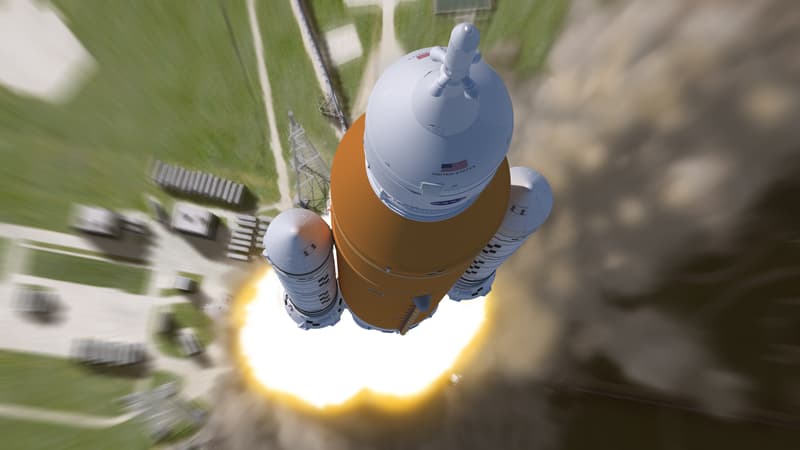Soon, humanity will take giant leaps on the Moon. Thanks to the Artemis program, NASA intends to send astronauts back to explore our satellite. With this in mind, the gigantic SLS rocket (for Space Launch System), built in particular by Boeing, should make the first part of the journey, at the end of 2024, carrying four astronauts in the Orion capsule.
The lucky four will circle the Moon a few times before returning to Earth. This will be one last test before the great return of Man to the Moon, which will take place from 2025.
Problem, this gigantic rocket is expensive, too expensive even, according to a report of Paul Martin, NASA Inspector General, as seen by Presse Citron. In total, $23.8 billion has been committed to the SLS rocket, which is already “a cost increase of $6 billion.”
NASA’s bad decisions
Result, in this slope, the total budget of the Artemis program will be around 94 billion dollars by 2025. A financial drift partly attributable to the engines. NASA wanted to save money but the agency failed.
“These cost increases are caused by interrelated issues, including the erroneous assumption that the use of legacy technologies from the Space Shuttle and Constellation programs would significantly lower costs and shorten delivery times compared to developing new systems for the SLS”, denounces the Inspector’s report. NASA General.
In fact, the SLS rocket, successfully tested in 2022, uses old space shuttle engines that need to be retrofitted to the rocket. Except the operation costs a lot more than expected. Only 16 of these engines remain, and to date only 5 have been retrofitted. In addition, once this stock is exhausted, it will be necessary to build new ones.
already 6 years late
However, the report points out that the manufacturers involved (Northtropp Grumann and Aerojet Rocketdyne) are encountering technical difficulties in several essential components: turbos, high and low pressure pumps, injectors, valves, combustion chamber, boosters, etc.
An explosive situation that can potentially threaten the Artemis mission if these issues are not resolved quickly. Today, a cost overrun of $6 billion is nothing, especially at this time when the issue of debt is more than sensitive in the United States.
Beyond money, these problems generate in parallel the consequent delays. Except the show is already 6 years late. If the original schedule had been adhered to, astronauts should have been orbiting the Moon since 2020.
Source: BFM TV


